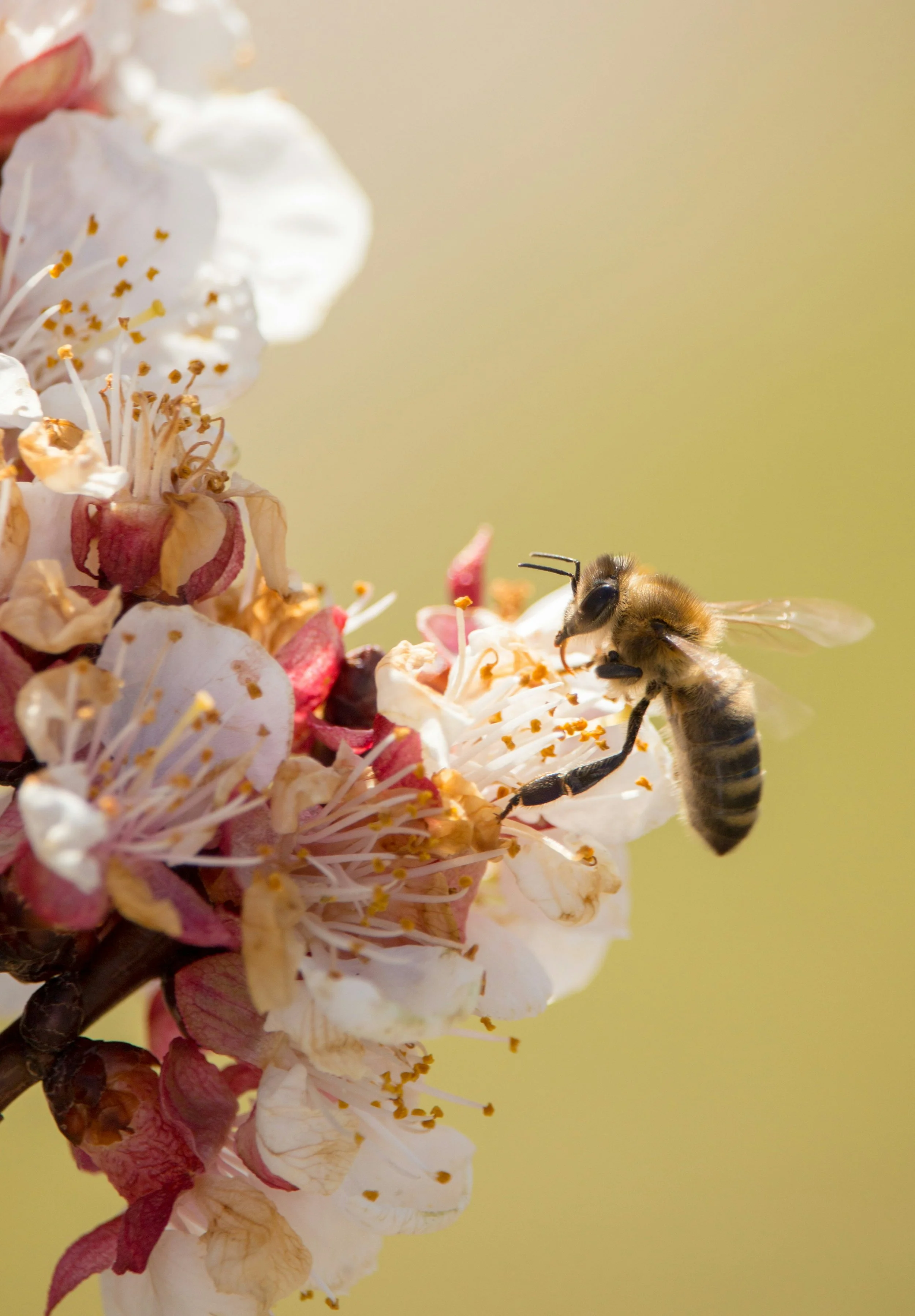Spring Renewal: Ayurvedic Tips for a Healthy, Energized Season
Here in Mallorca, the fields are ablaze with red poppies and yellow calendula. The fig trees are sprouting new leaves and the nispero trees are beginning to bear their succulent fruit. After several weeks of rain, the grass is radiant in all its green glory. It truly feels like a new year.
"And We have sent down blessed rain from the sky and made grow thereby gardens and grain from the harvest. And lofty palm trees having fruit arranged in layers—As provision for the servants, and We have given life thereby to a dead land. Thus is the resurrection." Quran 50:9-11
In Ayurveda, spring is also seen as a time of renewal and rebirth. Kapha dosha is operating at maximum capacity during this season, having spent time building up in strength during the late winter. Interestingly, kapha is also the dosha that is said to dominate during childhood, and, within the Ayurvedic framework, it is considered to be the body’s main agent of growth. Kapha is associated with the qualities of heaviness, density, slowness, stability, sweetness, and stickiness—all adjectives I would associate with childhood. If you think about it, childhood and springtime do have a lot in common; with both, we bear witness to a tremendous outpouring of life, growth, transformation.
However, as with anything, excess kapha can cause discomfort in the body. For example, mucus overload is a common experience in both childhood and in the spring. (There is a reason, at least Ayurvedically speaking, why kids always have runny noses when you pick them up from school and why springtime allergies are so common!) Emotional heaviness can also be common during this time of year, and people may have a hard time getting out of bed. Teenagers are a prime example of both these experiences and, if you pay attention, you may find that you tend towards this in the spring, as well, though this does depend on the other doshas at play in your body.
That being said, Ayurveda would not exist still today if it did not also offer the antidotes to the physical ills it describes. For example, spring is traditionally the season during which vamana–a major cleansing protocol–is carried out, capitalizing on kapha’s increased activity to then flush it out. Vamana, however, is not for the faint of heart. Thankfully, there are plenty of other diet and lifestyle recommendations that can help keep kapha within its rightful bounds, allowing you to enjoy the sweetness of spring without being bogged down by it:
Fasting
In Ayurveda, spring is considered the best time of year for langhana–a term that denotes lightening the body’s load. As a part of this protocol, we are recommended to eat lighter now than at other times of year. The sweet pastries and rich, creamy dishes which are ABSOLUTELY recommended for other times of year are usually shelved for the few months of spring. Periodic fasting is also implemented in order to keep energy high. Ramadan has always been a wonderful exercise in langhana. This year, you may have found that you were not pushed to your absolute physical limits like in other years. From the Ayurvedic perspective, this is because springtime is the perfect moment to reduce the quantity and intensity of food consumption, anyway. Perhaps you even felt a surge of energy earlier in the month, indicating that the langhana was producing its desired effect.
Movement
Nothing puts kapha in its rightful bounds more than movement. Kapha´s natural tendency is to remain still and accumulate, which is wonderful when we need to reset our nervous systems and gather our energy. However, in excess, kapha can make us feel lethargic and heavy. Movement counteracts that. Strength training and more rigorous exercise are both recommended during the spring since we have kapha´s density and stability on our side. This is an excellent time to pick up weights and do some of the heavier lifting that you may find overly depleting at other times of year. If you don´t already have an exercise routine, spring is an excellent time to get a headstart. Ayurvedically speaking, the goal should be to exercise at ½ capacity, getting to the point where you break a sweat but not too far beyond that.
Barley
I love what a favored position this Sunnah food has in Ayurveda. It is frequently prescribed in the classics for all disorders stemming from kapha, including diabetes and obesity The Prophet ﷺ also recommended it for those who are ill.
In one instance, the Prophet ﷺ visited Ali رَضِيَ ٱللَّٰهُ عَنْهُ when he was recovering from illness. Ali was about to eat some fresh dates when the Prophet ﷺ stopped him and discouraged him from eating the dates while he was recovering. He instead encouraged Ali to eat a soup made with barley and chard and said this is more beneficial for you. Mishkat al- Masabih, Book 21, Hadith 4150
Spring is a wonderful time to include more barley as it absorbs excess moisture within the digestive system, which can then be more easily eliminated. A warm barley chicken soup is a perfect spring meal, as is a porridge made from barley flakes with bitter greens like Swiss chard and arugula.
Bitter Greens
The bitter taste pacifies kapha more than any other. Thankfully, bitter greens grow in abundance during the spring. Beginning the day with a bitter tea is particularly effective, but any bitter you include (at any time of day) will keep things running smoothly this spring. I personally favor dandelion tea, but nettle and bitter gourd (sometimes referred to as bitter melon) are also top springtime tea options. Bitter vegetables such as kale, arugula, Swiss chard, cabbage, broccoli, cauliflower, green beans, peas, and Brussel sprouts are also considered springtime medicinals. Cook them into stews or roast them, lightly sauté them or steam them as sides. You can prevent gas and increase the kapha-pacifying effect by cooking them with ginger, pepper, cumin, coriander and/or turmeric.
Honey
“And thy Lord revealed unto the bee, ‘Take up dwellings among the mountains and the trees and among that which they build. Then eat of every kind of fruit, and follow the ways of your Lord made easy.’ A drink of diverse colors comes forth from their bellies wherein there is healing for mankind. Truly in that is a sign for a people who reflect.” Quran 16:68-69
Honey is unique as the only food whose healing effect is named directly in the Quran. It was also a well-known habit of the Prophet ﷺ to drink honey with water first thing in the morning. In Ayurveda, honey is considered one of the only sweet foods that has a hot after-effect on the body, making it perfect for removing excess kapha. Honey is also considered a yogavahi substance–one that increases the potency of other herbs. One of my favorite go-to remedies for mucus-related sickness includes a spoon of honey mixed with black pepper and turmeric. In the classical texts, this is a highly-effective prescription for productive cough, which is a common ailment we see in the spring.
I hope you find all of this helpful! Just keep in mind that each body is different, with various factors at play. There are no one-size fits all recommendations within the Ayurvedic framework. The idea is to experiment with your body to see what it needs at given moments in your day, year, life.





